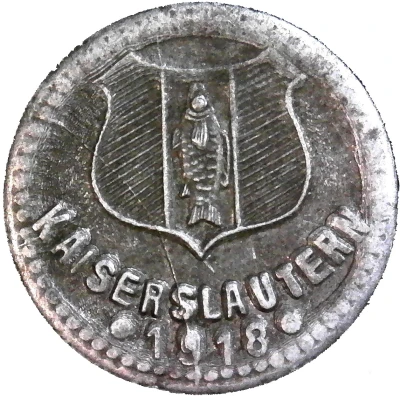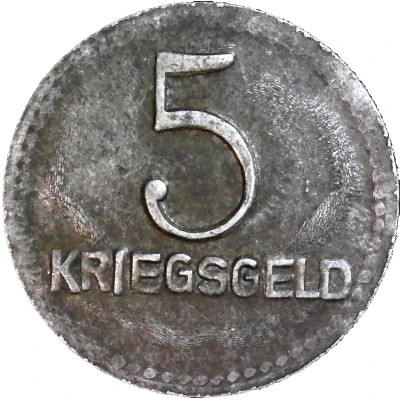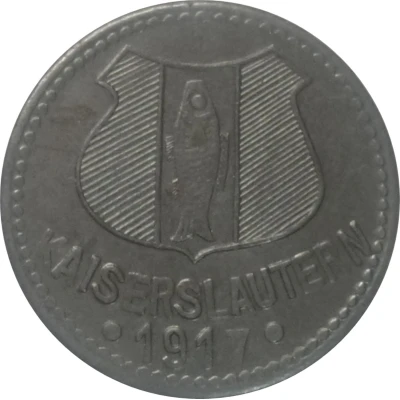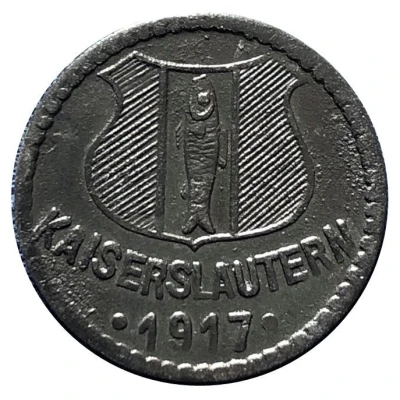
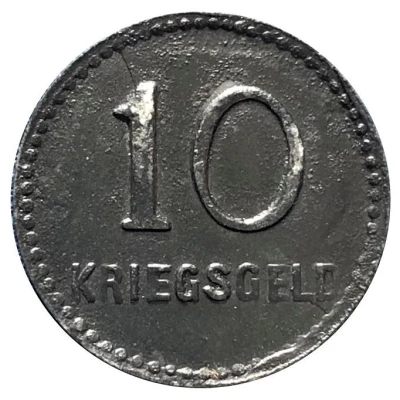

© Rhonan (CC BY-NC-SA)
10 Pfennigs - Kaiserslautern
1917 year| Zinc | 1.6 g | 20.0 mm |
| Issuer | City of Kaiserslautern (Federal state of Bavaria) |
|---|---|
| Emperor | William II (Wilhelm II) (1888-1918) |
| Type | Standard circulation coin |
| Year | 1917 |
| Value | 10 Pfennigs (10 Pfennige) (0.10) |
| Currency | Mark (1914-1924) |
| Composition | Zinc |
| Weight | 1.6 g |
| Diameter | 20.0 mm |
| Thickness | 1 mm |
| Shape | Round |
| Technique | Milled |
| Orientation | Medal alignment ↑↑ |
| Demonetized | Yes |
| Updated | 2024-10-04 |
| Numista | N#27290 |
|---|---|
| Rarity index | 33% |
Reverse
Peral rim surrounding denomination and legend
Script: Latin
Lettering:
10
KRIEGSGELD
Edge
Plain
Comment
Issuing body: [Stadt, Pfalz].Interesting fact
One interesting fact about the 10 Pfennigs - Kaiserslautern 1917 coin is that it was issued during a time of economic turmoil in Germany, known as the "Inflationary Period" (1914-1923). During this time, the value of the German mark (the national currency) dropped significantly, leading to a period of hyperinflation. As a result, many Germans turned to alternative forms of currency, such as local emergency currencies like the 10 Pfennigs - Kaiserslautern 1917 coin, which was issued by the City of Kaiserslautern in Bavaria. This coin, made of zinc and weighing 1.6 grams, was used as a substitute for the devalued national currency and helped to alleviate some of the economic hardship faced by the local population.
Price
| Date | Mintage | VG | F | VF | XF | AU | UNC |
|---|---|---|---|---|---|---|---|
| 1917 | - | - | - | - | - | - |
Values in the table are based on evaluations by sales realized on Internet platforms. They serve as an indication only for 10 Pfennigs - Kaiserslautern 1917 coin.
